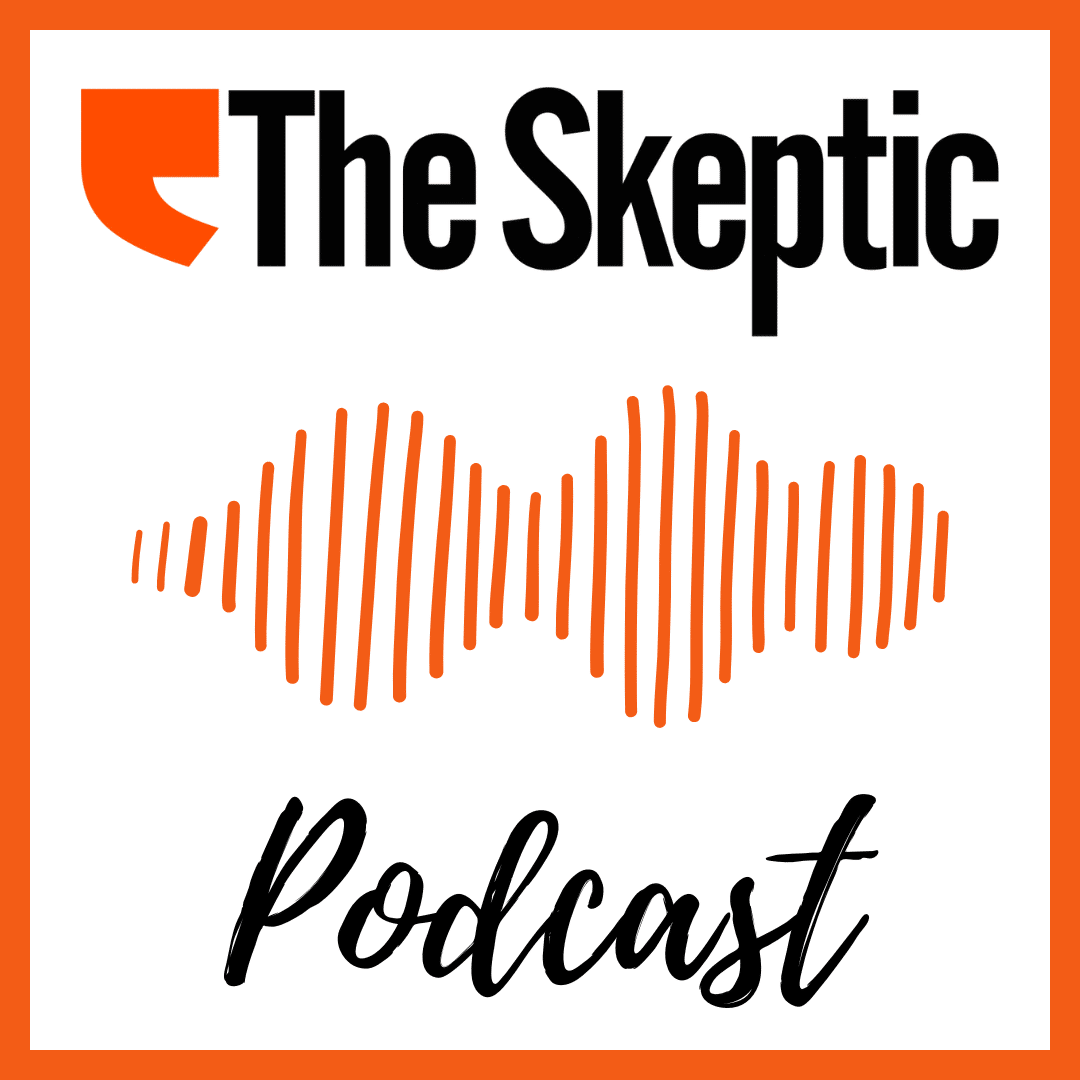In Part 1 of this two-part article, I described the Satanic Panic that arose in the United States back in the 1980s and then spread to several other countries including the UK. The Satanic Panic was the belief that Satanic ritual abuse was widespread, involving human and animal sacrifice, cannibalism, and extreme sexual abuse perpetrated by a powerful international network of Satanic conspirators. With the benefit of hindsight, we can see that the so-called evidence upon which such claims were based should have been questioned from the start in terms of its reliability.
There was always a lack of the kind of physical forensic evidence that one might expect if such activities really were taking place. The accounts from literally hundreds of alleged child victims of this abuse were the product of entirely inappropriate, high-pressure interrogations from social workers and others. The accounts from adults apparently ‘recovering’ memories of such abuse during psychotherapy were almost certainly based upon false memories. Surely, now that we know all this, such a phenomenon could not happen again, could it? Worryingly, there are signs that it could.
One of the major sources of evidence put forward in support of the reality of Satanic abuse was the accounts from adults undergoing psychotherapy for common psychological problems. Prior to entering into therapy, these individuals had no memories of ever being the victim of childhood abuse, but they would apparently recover such distressing memories as the therapy progressed. The perpetrators were often said to be the alleged victim’s own parents, and sometimes it was claimed that the abuse was of a Satanic nature. The big question was, of course, were these memories based upon accurate recall of events that had really taken place or were they false memories unintentionally produced by the therapeutic process itself? The only silver lining to emerge from this grim situation, involving as it did families being torn apart and individuals being put on trial accused of the most heinous crimes, was that it generated a huge amount of research into the topic of false memories.
Fast forward into the current century and the evidence that people are much more susceptible to false memories than might once have been thought had accumulated. Furthermore, as I highlighted in my previous article, we knew enough about the optimal conditions for generating false memories to know that the psychotherapeutic context would provide fertile soil for the development of such memories. There had been a backlash against psychotherapists using dubious memory recovery techniques, with many finding themselves in the dock, accused of implanting false memories in their clients. The media in general were adopting a much more sceptical approach to claims of Satanic abuse – in contrast to their previous credulous and sensationalistic reporting of such claims.

There were important developments within academic psychology over this period too. The claim that memories ‘recovered’ during therapy were accurate was based upon acceptance of the psychoanalytic concept of repression. Repression was said to occur when an individual experienced trauma that was so overwhelming that an automatic and involuntary psychological defence mechanism kicked in, pushing the memory into an unconscious part of the mind from whence it could not be retrieved no matter how strongly it was cued. Such memories could still cause psychological problems, it was claimed, and these problems could only be resolved by recovering the memories in therapy and ‘working through them’. The psychological problems caused by such repressed memories were said to range from relatively common problems such as anxiety, depression, and low self-esteem, to much more exotic (and controversial) diagnoses, such as multiple personality disorder (now known as dissociative identity disorder or DID). The latter, as described in Part 1 of this article, was said to be particularly likely to develop in victims of Satanic ritual abuse.
Internationally respected memory experts, such as Elizabeth Loftus and Richard McNally, presented powerful critiques of the concept of repression. As they and others pointed out, traumatic events are typically better remembered than emotionally neutral events. This certainly makes sense in evolutionary terms. A psychological defence mechanism that prevented you from remembering and protecting yourself against potential threats would be about as useful as Zaphod Beeblebrox’s “Peril Sensitive Sunglasses” in Douglas Adams’ five-part trilogy The Hitchhiker’s Guide to the Galaxy. In case you have forgotten (or repressed it), let me remind you that Zaphod wore sunglasses that would turn totally black at the first hint of any kind of threat, thus allowing the wearer to remain relaxed at all times!
The controversy regarding memory for trauma raged so fiercely during the 1990s that it became known as “the Memory Wars”. However, as the risks of implanting false memories through the use of dubious memory recovery techniques – such as hypnotic regression and guided imagery – became more widely known in this century, it was claimed by some that the Memory Wars were over. For example, Joel Paris, MD, wrote in 2012 (p. 1078):
The current decline in interest in DID reflects a level of scepticism that inevitably tends to follow faddish concepts and practices.
Similarly, with respect to what he calls the “repressed-recovered memories – multiple personality disorder [RRM-MPD] industry”, Dr R. Christopher Barden wrote in 2016 (p. 352):
By the end of 1997, co-ordinated, multidisciplinary reform processes had largely collapsed the once-burgeoning RRM-MPD therapy industry.
I confess that I too shared this optimism a few years ago.
Unfortunately, it appears that our optimism may have been premature. Although most scientists specialising in memory research are sceptical of the concept of repression, high levels of belief are still found amongst the general public and clinicians. Other professional groups, such as social workers, lawyers, judges, and the police, show similarly high levels of belief (French & Ost, 2016; Ost & French, 2016) in this scientifically unvalidated concept. The implications of widespread misconceptions about the true nature of memory for the legal system are extremely worrying.
Some commentators have recently launched attacks against false memory research. For example, Chris Brewin and Bernice Andrews published a review article in 2017, essentially arguing that false memory researchers were guilty of giving a misleading impression of how easy it is to implant false memories for childhood events. According to them, only 15% of the participants in such studies had actually generated full false memories. However, there are good reasons to be very cautious in accepting such a conclusion, not least the fact that this very controversial paper was accepted for publication without being sent out for peer review. Indeed, it had been rejected for publication by three major journals prior to finally being published – without any peer-review – in the journal Applied Cognitive Psychology.
Commentators drew attention to many shortcomings with Brewin and Andrews’ analysis and conclusions. For example, even if the 15% figure was correct – and many commentators did not believe it was – this is still a worryingly high number when considered in a clinical or legal context. It would mean that three out of twenty clients exposed to dubious forms of psychotherapy may end up with false memories of being the victim of abuse that never actually happened, potentially leading to hundreds of wrongful convictions for crimes that never occurred.
It was also pointed out that experimental studies of false memory implantation typically use students as volunteer participants. As described in Part 1 of this article, they are often asked to recall details of an event from childhood that, unbeknownst to them, never actually happened. Initially, they report that they cannot remember the event and they are told to go away and think about it to see if any details do come to mind. After three such interviews, some volunteers report full false memories for the non-existent event, sometimes adding in new details that were not suggested by the experimenter. There is no strong motivation for these volunteers to ‘recover’ memories other than to please the experimenter. Compare that to the situation of the vulnerable client in psychotherapy who is told in numerous highly emotional sessions that they must recover memories of abuse if they are to stand any chance of recovery. It is not unreasonable to suggest that the potential for the generation of false memories will be much higher in the clinical than the experimental context.
Numerous other objections were raised in response to Brewin and Andrews’ paper, but space limitations preclude discussion of them all here. In response to their flawed analysis, Alan Scoboria and colleagues reanalysed data from eight peer-reviewed memory implantation studies, involving some 423 participants, using the same reliable coding system across all studies and found that the best estimate of the rate of false memory generation was 30.4% (with a further 23% reported as having accepted to some degree that the event occurred).
Henry Otgaar and colleagues recently reviewed several lines of evidence all pointing to the same unwanted conclusion: the Memory Wars are far from over. In their words (p. 1072):
We review converging research and data from legal cases indicating that the topic of repressed memories remains active in clinical, legal, and academic settings. We show that the belief in repressed memories occurs on a nontrivial scale (58%) and appears to have increased among clinical psychologists since the 1990s. We also demonstrate that the scientifically controversial concept of dissociative amnesia, which we argue is a substitute term for memory repression, has gained in popularity. Finally, we review work on the adverse side effects of certain psychotherapeutic techniques, some of which may be linked to the recovery of repressed memories. The memory wars have not vanished. They have continued to endure and contribute to potentially damaging consequences in clinical, legal, and academic contexts.
For readers wishing to learn more, I would highly recommend this lecture from Henry Otgaar and these from Lawrence Patihis.
Clearly, it is quite possible to believe in the reality of repression without necessarily accepting that Satanic abuse is widespread. However, it is the case that one of the two major strands of evidence presented in support of the existence of such abuse was based upon an acceptance of this discredited notion and it is hoped that a better appreciation of the true nature of memory amongst the general public and professionals would go some way towards minimising the risks of such panics occurring again in the future.
I had intended to include in this article recent examples of the Satanic Panic raising its ugly head again out in the real world, beyond the ivory towers of academia, but I have decided that that will have to wait, with apologies to Douglas Adams, until Part 3 of this two-part article.
References
- Barden, R. C. (2016). Memory and reliability: Developments and controversial issues. In P. Radcliffe, G. Gudjonsson, A. Heaton-Armstrong, & D. Wolchover (eds.). Witness Testimony in Sexual Cases: Evidential, Investigative and Scientific Perspectives. Oxford: Oxford University Press. Pp. 343-359.
- French, C. C., & Ost, J. (2016). Beliefs about memory, childhood abuse, and hypnosis amongst clinicians, legal professionals and the general public. In R. Burnett (ed.). Wrongful Allegations of Sexual and Child Abuse. Oxford: Oxford University Press. Pp. 143-154.
- Ost, J., & French, C. C. (2016). How misconceptions about memory may undermine witness testimony. In P. Radcliffe, G. Gudjonsson, A. Heaton-Armstrong, & D. Wolchover (eds.). Witness Testimony in Sexual Cases: Evidential, Investigative and Scientific Perspectives. Oxford: Oxford University Press. Pp. 361-373.



